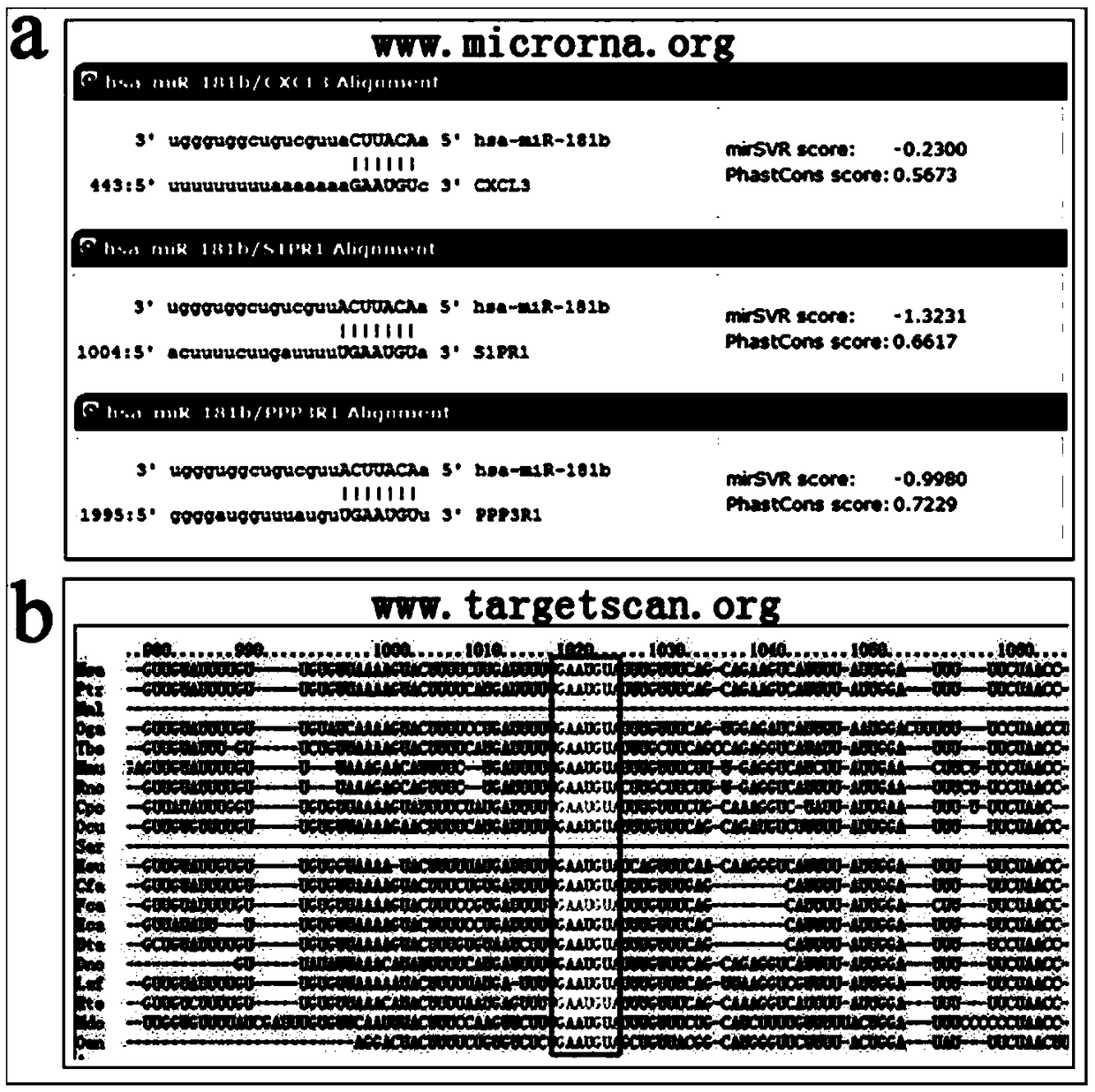Biomarker for abnormal invasion of trophoblast cells and application thereof
A trophoblastic and invasive technology, applied in the field of biomarkers with abnormal trophoblastic invasiveness, can solve problems such as singleness, improve sensitivity and specificity, prevent disease progression, and facilitate detection.
- Summary
- Abstract
- Description
- Claims
- Application Information
AI Technical Summary
Problems solved by technology
Method used
Image
Examples
Embodiment 1
[0024] Example 1: Screening of miRNAs involved in abnormal trophoblast invasiveness
[0025] Two typical disease-related tissues with weakened trophoblastic invasiveness were selected: early spontaneous abortion villi (the maternal progesterone and immune-related indicators were normal, and the prenatal diagnosis center of our hospital ruled out chromosomal abnormalities by karyotype analysis) and preeclampsia placenta, using normal villi and normal placenta as their respective controls, using μParaflo microfluidic chip technology to screen miRNAs with consistent differences between the two groups of diseases.
[0026] The results showed that compared with the control group, there were large differences in miRNAs expression levels in spontaneous abortion villi and preeclampsia placenta tissues; but only 25 miRNAs expression levels were consistent and more than 5 times different between the two groups of diseases, of which 16 expression levels increased, and 9 expression levels...
Embodiment 2
[0027] Example 2: Expression of miR-181b in different diseases related to abnormal trophoblast invasion
[0028] In order to further evaluate the correlation between these three factors and trophoblast invasiveness, we verified them on choriocarcinoma specimens with strong trophoblast invasion.
[0029] Collect 50 cases of spontaneous abortion villi tissues (with insufficient trophoblast invasiveness), and normal villous tissues (with normal trophoblast invasiveness) as a control; at the same time, collect 50 cases of preeclampsia placenta tissues (with insufficient trophoblast invasiveness), and 50 cases of choriocarcinoma tissues Specimens (trophoblasts with excessive invasiveness) and normal placental tissue (trophoblasts with normal invasiveness) were used as controls. Real time PCR or Western Blot technology was used to detect the expression of miR-181b in placenta, chorionic villi and choriocarcinoma tissue samples, and evaluate the relationship with the invasiveness of ...
Embodiment 3
[0034] Example 3: Effect of miR-181b on trophoblast invasiveness
[0035] Bioinformatics analysis found that miR-181b is highly conserved among different species (human, rat, mouse, zebrafish), and the homology is more than 95% (see Table 1), which means that its potential function is important. sex. However, literature review found that there is currently no report on the relationship between miR-181b and trophoblast invasiveness.
[0036] Table 1 Species conservation analysis of miR-181b
[0037]
[0038] In order to obtain more supporting evidence, we used two highly invasive JEG-3 and HTR-8 / Svneo cells as tool cells, and adopted overexpression and silencing strategies to change the expression of miR-181b in cells.
[0039] 1. The effect of miR-181b overexpression on the invasiveness of trophoblast cells:
[0040] The miR-181b lentiviral expression vector was constructed, and the empty lentivirus was used as the control, which was coated into lentiviral particles, and...
PUM
 Login to View More
Login to View More Abstract
Description
Claims
Application Information
 Login to View More
Login to View More - Generate Ideas
- Intellectual Property
- Life Sciences
- Materials
- Tech Scout
- Unparalleled Data Quality
- Higher Quality Content
- 60% Fewer Hallucinations
Browse by: Latest US Patents, China's latest patents, Technical Efficacy Thesaurus, Application Domain, Technology Topic, Popular Technical Reports.
© 2025 PatSnap. All rights reserved.Legal|Privacy policy|Modern Slavery Act Transparency Statement|Sitemap|About US| Contact US: help@patsnap.com



